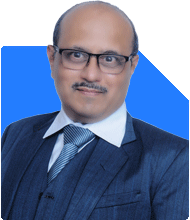Im 35 years old with 2 baby boys of 4 and 1 year old. Monthly salary of 2.74lakh. Monthly home loan emi of 86k and 79 emis pending. Monthly SIP of 20k with 20% step up and started 1 year back. PPF of 1.5lakh yearly and completed 10years. LIC Jeevan Labh with 2.28lakh yearly premium with maturity on 2047 with 1.3cr and 50lkh sum assured. Monthly 20k to gold scheme for ornamental gold. PF of 15k monthly. Health insurance topup of 30lakh. Term insurance from office and sum assured from lic jeevan labh. Please suggest on financial planning for kids education and early retirement.
Ans: You are doing very well with your planning. Managing salary, expenses, investments, and family needs together is a big achievement. Providing quality education to two young boys is your dream, and early retirement is a powerful goal. Your efforts so far set a strong foundation.
» Salary, EMI, and Expenses
Your salary is Rs.2.74 lakh monthly. This gives financial strength. Outgoings are significant. The home loan EMI is Rs.86,000 per month and 79 EMIs are left. This is a long commitment. After EMI, balance income must manage family, lifestyle, and invest for future.
» SIP Strategy and Growth
Monthly SIP of Rs.20,000 begun one year ago is a solid step. You plan a yearly step-up of 20%. Increasing SIP each year is crucial for building greater wealth. This habit helps beat inflation. SIPs work best with discipline and growth rate.
» Children’s Education Planning
Both boys are very young. Education costs rise at 10% to 12% each year. The final amounts for higher studies will be much higher than today's costs. Regular SIPs in mutual funds, combined with annual step-ups, provide growth. Mutual funds give inflation-beating returns, unlike fixed deposits. Do not use index funds for this goal. Index funds often lag market and cannot deliver higher-than-average returns. Actively managed funds have experts making smart choices for growth. Stay focused on long duration, careful increase every year.
Long-term savings like PPF also help here. PPF is safe, and you have completed 10 years already. Continue to use PPF as a backup corpus. For short-term school expenses, keep a safe reserve in bank or liquid funds for timely withdrawal.
» Gold Scheme and Family Wealth
Rs.20,000 monthly for ornamental gold is a big saving. Gold helps in traditions, gifting, and weddings. But gold is not wealth-creating for education or retirement. It does not earn income or beat inflation regularly. Continue gold savings as part of family tradition. Do not depend on this for education goals.
» PF and PPF
Employee PF of Rs.15,000 each month adds future corpus. It supports retirement, health emergencies, and job uncertainty. Public Provident Fund (PPF) yearly contribution of Rs.1.5 lakh builds steady, moderate growth. PPF is tax-free at maturity, so it helps reduce risk. However, PPF return is capped, and below inflation most times. SIP in mutual funds gives long-term wealth, and PPF gives safe, backup corpus for emergencies.
» Life Insurance Policies
You have LIC Jeevan Labh, with yearly premium of Rs.2.28 lakh. Maturity is Rs.1.3 crore in 2047, with Rs.50 lakh sum assured. This is a mix of investment and insurance. Such policies often give lower returns than mutual funds. If you can secure pure term plan separately, it may be better to surrender the investment-cum-insurance policy and reinvest that yearly premium in mutual funds. Mutual funds over 20 years give higher compounding growth. Insurance-cum-investment plans are costly and returns are moderate. By switching premium to a mutual fund SIP, you build bigger corpus for children’s education and retirement.
» Insurance Protection
You have office term insurance and LIC sum assured. Top-up health insurance of Rs.30 lakh is strong. Health care costs rise fast, so keeping this protection is wise. For life coverage, pure term insurance is best. It provides full protection at low cost. Check if your sum assured is at least 10-12 times your annual salary for safe family security. If not, increase pure term coverage.
» Debt Management
Home loan is the largest outgoing now. 79 EMIs means over 6 years left. Try to close it earlier by prepaying principal if possible. Any yearly bonus or increments can be partially used for early repayment. Reducing loan tenure gives freedom quicker, and lets you push more money towards investments for retirement and education. But only prepay if no penalty and if cashflow permits.
» Inflation and Future Expense
Children’s education will be expensive. Rs.10 lakh studies today can cost Rs.30-40 lakh in 15 years. Overseas studies can be Rs.50 lakh to Rs.1 crore. Always plan for inflation, do not use current statistics for future needs. For education, start targeted SIPs with goal-based planning. Increase SIP every year using step-up formula. For retirement, budget for Rs.1 lakh per month in today’s value for expenses, adjusted upward yearly.
» Early Retirement Plan
Early retirement requires a solid corpus. It means stopping work before usual 60 years. You need to generate income for more years without job. Keep increasing investments regularly. Use mutual funds (not index funds) for higher growth and active management. PPF and PF give smaller, slow increase, so do not depend on them for retirement. Do yearly review and asset allocation shift as you approach retirement age.
» Asset Allocation for Security
For future security, balance between growth, stability and liquidity is needed. For now, stay tilted towards equity, actively managed funds for growth. As you get closer to retirement, shift step-by-step to debt for safety. Active management gives better returns, dynamic allocation, risk protection against market falls. Index funds have no expert intervention. In turbulent markets, they fall as much as the market does. Actively managed funds protect your wealth from big dips and poor performing sectors.
» Emergency Fund
Keep a liquid emergency fund for sudden expenses. Three to six months’ living cost in liquid funds or bank is good. Use this only if needed, do not touch main investments. This keeps family safe during health or job crisis.
» SIP Continued and Stepped-Up
Every year raise your SIP by at least 20%. With increments, push more into investment, using disciplined step-up approach. Compounding on increased base over each year multiplies future wealth. Missed years cannot be matched later, so make every year count.
» Kids’ Key Education Milestones
Build education funds for each child’s higher studies. Plan for undergraduate by 15 years, postgraduate by 20 years. Start separate SIP bucket or goal for each milestone. Review progress yearly, increase contributions if needed. Protect goal from short-term market risk as milestone date approaches by shifting gradually to safer funds.
» LIC Jeevan Labh Surrender – Should You?
Investment-cum-insurance policies often give limited returns vs mutual funds. Surrendering after 2 years of premiums paid is allowed. Switch premium amount to mutual funds for targeted growth. With mutual funds, you can monitor, adjust, and increase contributions to meet children’s education and retirement needs better. Regular plans via MFD and Certified Financial Planner provide advice, discipline, and after-sales support, unlike direct plans which miss this support.
» Avoid Direct Funds Pitfall
Direct funds miss guidance and regular portfolio checkup. Mistakes can be costly, especially in complex markets or volatile years. Regular plans with MFD and Certified Financial Planner provide advice, systematic review, and tailored support. Guidance keeps all goals on track, protects you from bypassing key milestones or making emotional choices. In direct funds, investor is alone with research and paperwork, which causes missed opportunities or costly errors.
» Taxation – New Rules
Equity mutual funds – long-term capital gain above Rs.1.25 lakh is taxed at 12.5%. Short-term capital gain is taxed at 20%. Debt mutual funds are taxed as per your tax slab, whether short or long term. PPF is tax-free. Factor tax when planning withdrawals and final corpus.
» Step-by-Step Yearly Action
– Do annual review of all goals
– Increase SIP by 20% each year
– Push surplus into kids’ education SIPs
– Prepay home loan if cashflow allows
– Check insurance adequacy and increase coverage if required
– Keep an emergency fund aside and never touch main investments
– Close LIC Jeevan Labh and reinvest premium in mutual funds via Certified Financial Planner
– Separate gold for family traditions, not for retirement or education goals
» Finally
Your structured efforts are very powerful. Continue SIPs and keep increasing each year. Plan targeted goals for each child and retirement. Surrender LIC investment-insurance policy and focus on wealth creation through mutual funds. Ensure Insurance protection stays strong. Review each milestone regularly. This approach gives your family future security and achieves early retirement dream with confidence and peace.
Best Regards,
K. Ramalingam, MBA, CFP,
Chief Financial Planner,
www.holisticinvestment.in
https://www.youtube.com/@HolisticInvestment
.jpg)

























